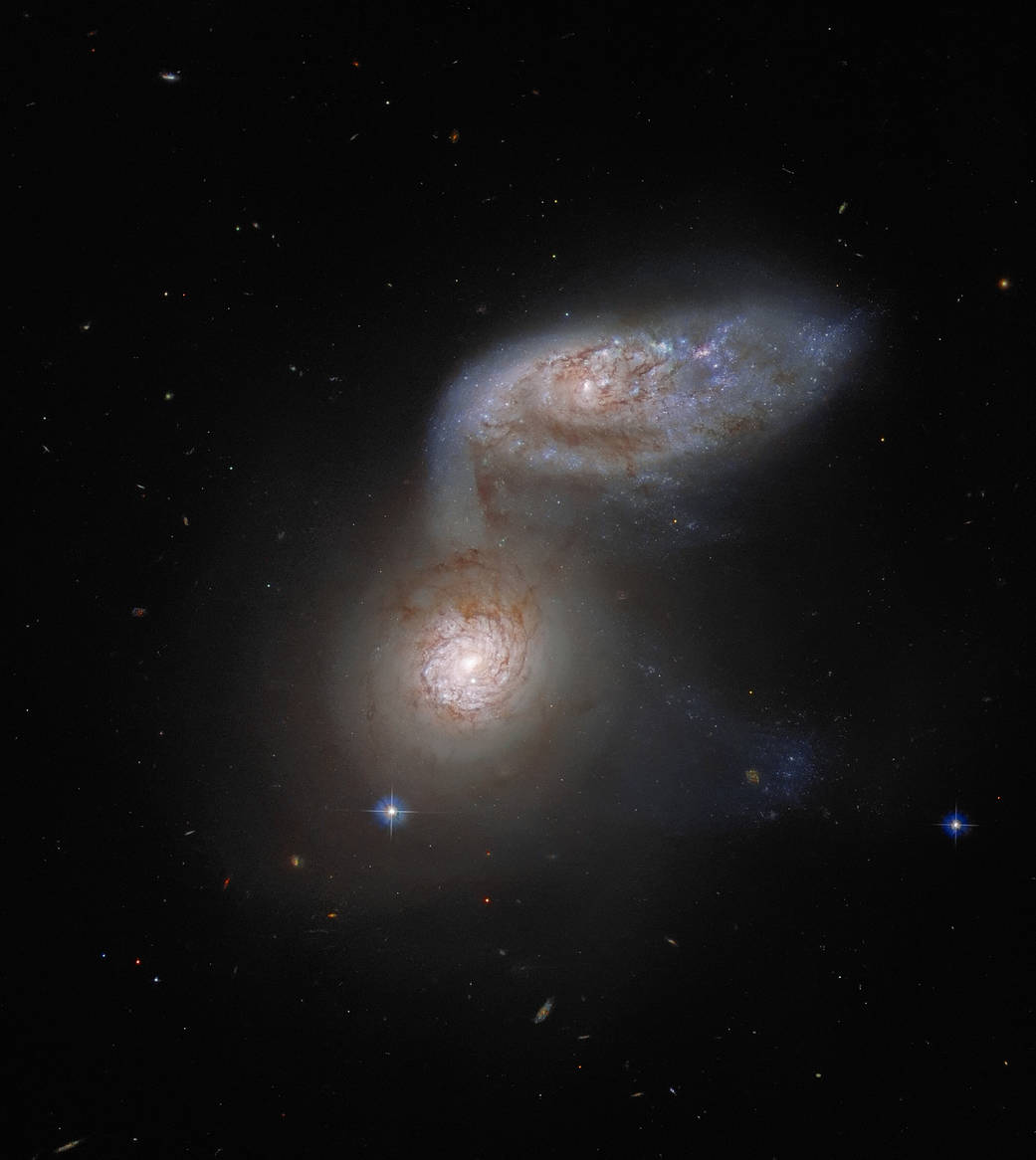This NASA/ESA Hubble Space Telescope image features two interacting galaxies that are so intertwined, they have a collective name – Arp 91. Their delicate galactic dance takes place more than 100 million light-years from Earth. The two galaxies comprising Arp 91 have their own names: the lower galaxy, which looks like a bright spot, is NGC 5953, and the oval-shaped galaxy to the upper right is NGC 5954. In reality, both of them are spiral galaxies, but their shapes appear very different because of their orientation with respect to Earth.
这张NASA/ESA哈勃太空望远镜的图片展示了两个相互作用的星系,它们交织在一起,有一个共同的名字——Arp 91。它们微妙的星系之舞发生在距离地球1亿多光年的地方。组成Arp 91的两个星系都有自己的名字:下面的星系,看起来像一个亮点,是NGC 5953,右上方的椭圆形星系是NGC 5954。实际上,这两个星系都是螺旋星系,但是由于它们相对于地球的方向不同,因此它们的形状看起来非常不同。
Arp 91 provides a particularly vivid example of galactic interaction. NGC 5953 is clearly tugging at NGC 5954, which looks like it is extending one spiral arm downward. The immense gravitational attraction of the two galaxies is causing them to interact. Such gravitational interactions are common and an important part of galactic evolution. Most astronomers think that collisions between spiral galaxies lead to the formation of another type of galaxy, known as elliptical galaxies. These extremely energetic and massive collisions, however, happen on timescales that dwarf a human lifetime. They take place over hundreds of millions of years, so we should not expect Arp 91 to look any different over the course of our lifetimes!
Arp 91提供了一个特别生动的星系互动的例子。NGC 5953明显地拉扯着NGC 5954,而NGC 5954看起来像是在向下延伸一条螺旋臂。这两个星系的巨大引力使它们发生了相互作用。这种引力相互作用是很常见的,也是星系演化的一个重要部分。大多数天文学家认为,螺旋星系之间的碰撞导致了另一种类型的星系的形成,即椭圆星系。然而,这些能量极强的大规模碰撞发生的时间尺度使人的一生相形见绌。它们发生在数亿年的时间尺度里,所以我们不应该指望Arp 91在我们的一生中看起来有什么不同!
Text credit: European Space Agency (ESA)
Image credit: ESA/Hubble & NASA, J. Dalcanton; Acknowledgment: J. Schmidt
文字来源:欧洲航天局 (ESA)
图片来源:ESA/Hubble & NASA, J. Dalcanton;致谢:J.施密特



